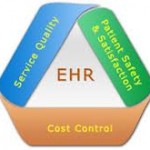Doctors Fed-up by EHRs with Inefficient Billing Workflows :
Healthcare practitioners have implemented EHRs/EMRs to comply with federal stipulations. However, many of them are unable to make optimal utilization of these EHRs/EMRs. Hospitals and clinics fail to receive complete payments for their services rendered – due to sloppy billing processes. Such improper billing workflows pose many revenue collection problems for doctors. Overworked doctors find it difficult to cope up with the requirements of healthcare business. They do not have the time to ensure optimal revenue collection and adhere to changing federal/state regulations and stipulations of insurance companies. Rather, they would prefer focusing on patient care.
What is the Expert Opinion ?
EHRs/EMRs with inefficient billing workflows continue to cause dissatisfaction among physicians. Holly Knapp, President of Loveland-based Medical Billing Advocacy of the Rockies (MBAR), LLC, and member Medical Billing Advocates of America (MBAA) claims:
- A. Patients do not know whether their bills are correct.
- B. Clinics and hospitals are not sure whether the insurance company has correctly reimbursed medical claims.
- C. Only 20% of prepared claims are correct.
Need for Professional Billing Experts :
Any EHR without the right billing option is like bread without butter and will not meet the revenue collection requirements of clinics and hospitals.This requires a team of experienced and knowledgeable professionals, who are well-versed with the intricacies of existing and changing codes and resulting billing processes across the US.
Increase the Efficiency Of Your Medical Practice :
There is an imperative need to enhance the functionality of the EHR by :
- 1. Ensuring streamlined, accurate and thorough clinical documentation. This documentation covers all workflow stages in a hospital or clinic, right from the time the patient reports at the reception and passes different stages of diagnosis, treatment, and discharge, and finally collection of patient’s dues.
- 2. Correct selection of codes and related modifiers based on clinical documents.
- 3. Ascertain medical necessity of diagnosis and treatment from the point of view of insurance agencies.
- 4. Check whether the patient is eligible and covered by the insurance for claiming reimbursements.
- 5. Prepare the insurance reimbursement claims correctly based on the combinations of codes and modifiers.
- 6. Prepare the claims in time and send to insurance payers.
- 7. Check the progress of claims sent to insurance.
- 8. Analyze rejected claims and resubmit corrected claims.
- 9. Make tight follow up for every claim.
- 10.Collect patient’s payment dues through aggressive follow-up.
You are free to contact MedicalBillingStar for any problems related to EHR/EMR or medical billing.
Here’s the presentation view on “12 tips to rebuild your EHR strategy”.





